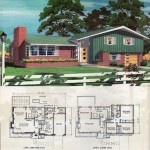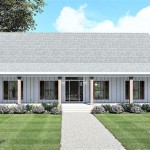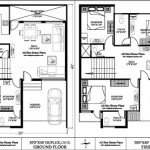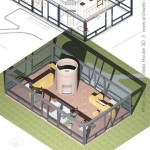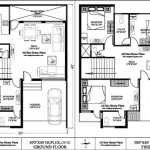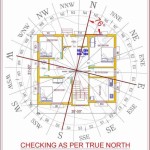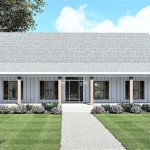Northern Cardinal Birdhouse Plans: Free Resources and Building Guides
The northern cardinal (Cardinalis cardinalis) is a striking North American songbird, known for its vibrant red plumage in males and the more subdued, yet equally elegant, coloration of females. Attracting these birds to your yard can add a splash of color and a cheerful melody to your outdoor environment. While cardinals primarily forage for food in the wild, providing a suitable nesting habitat can encourage them to breed and raise their young in your vicinity. Constructed birdhouses, while not the typical nesting preference of cardinals, can occasionally be utilized, particularly when natural nesting sites are scarce. This article explores available free resources for northern cardinal birdhouse plans, providing guidance on design considerations and construction techniques.
It is important to understand that northern cardinals are not cavity nesters like bluebirds or wrens. They prefer to build their nests in dense shrubs, vines, or low trees. However, offering an open-fronted nesting shelf or platform-style birdhouse can sometimes attract them, especially if it mimics the structure of a natural nesting location. The key is to provide a sense of security and camouflage, allowing the birds to feel protected from predators.
Understanding Cardinal Nesting Preferences
Before embarking on a woodworking project, understanding the cardinal's nesting habits is paramount. Cardinals are not drawn to enclosed birdhouses with small entrance holes. Their preference is for open areas that provide easy access and exit. They typically construct their nests in dense thickets, often 3 to 10 feet above the ground. The nest itself is a bulky cup-shaped structure made of twigs, leaves, vines, and lined with softer materials like grass, rootlets, and animal hair. Therefore, a birdhouse intended for cardinals should emulate the openness and accessibility of their natural nesting sites.
Consequently, the design should incorporate a wide opening, a sturdy base, and adequate drainage to prevent water accumulation. The location of the birdhouse is also critical. Placing it in a sheltered area, partially concealed by foliage, will increase the likelihood of the cardinals using it. The placement should also consider protection from direct sunlight and strong winds.
Exploring Free Birdhouse Plan Resources
Numerous online resources offer free birdhouse plans suitable for adaptation to attract northern cardinals. It is crucial to carefully evaluate these plans, ensuring they align with the cardinal's nesting requirements. Some reputable sources include university extension programs, wildlife conservation organizations, and woodworking websites. These sources often provide detailed instructions, material lists, and diagrams to facilitate the construction process.
Many websites provide generalized birdhouse plans that can be easily modified to suit cardinal preferences. The key is to focus on open-fronted designs, nesting shelves, or platform-style structures. When reviewing plans, pay close attention to the dimensions, materials, and construction techniques. Ensure the plan includes adequate drainage holes to prevent water from pooling inside the birdhouse. Also, consider the ease of cleaning, as regular maintenance is essential to prevent the buildup of parasites and diseases.
When searching for plans, utilize specific keywords such as "open-front birdhouse plans," "nesting shelf plans," or "platform birdhouse plans." These searches yield results that are more aligned with the cardinal's nesting preferences. Remember to critically assess the credibility of the source before relying on the plans. Look for sources with a proven track record of providing accurate information and reliable instructions.
Adapting and Modifying Existing Plans
Often, birdhouse plans designed for other species can be effectively adapted to attract cardinals. The most important adaptation is to create an open-fronted design. This can be achieved by simply omitting the front panel of a traditional birdhouse or by creating a large opening in the existing panel. The opening should be wide enough to allow easy access for the cardinals, but not so large that it compromises the structural integrity of the birdhouse.
Another modification is to add a roof overhang to provide additional protection from the elements. This overhang should be long enough to shield the nest from rain and direct sunlight. The roof should also be angled to allow for efficient water runoff. Furthermore, consider adding a perch near the entrance, although cardinals do not typically require a perch to enter the nesting site. However, a perch can provide a convenient spot for them to observe their surroundings.
The addition of camouflage is also a beneficial modification. This can be achieved by painting the birdhouse in natural colors such as brown, green, or gray. Alternatively, the birdhouse can be covered with natural materials such as bark, twigs, or moss. This camouflage helps to blend the birdhouse into its surroundings, making it less conspicuous to predators and more appealing to the cardinals.
Material Selection and Construction Techniques
The choice of materials is crucial for the longevity and functionality of the birdhouse. Untreated cedar or redwood are excellent choices, as they are naturally weather-resistant and durable. Pine can also be used, but it should be treated with a non-toxic, water-based sealant to protect it from the elements. Avoid using pressure-treated wood, as the chemicals used in the treatment process can be harmful to birds.
The construction process should be executed with precision and care. Ensure that all pieces are accurately cut and securely fastened together. Use screws or nails designed for outdoor use to prevent corrosion. Pay particular attention to the drainage holes, ensuring they are adequately sized and properly located to allow for efficient water drainage. The inside of the birdhouse should be smooth and free of splinters to prevent injury to the birds.
When assembling the birdhouse, consider the ease of cleaning. A removable bottom or side panel will facilitate regular maintenance. This allows you to easily remove old nesting material and clean the birdhouse to prevent the buildup of parasites and diseases. Regular cleaning is essential for maintaining a healthy nesting environment for the cardinals.
Placement and Maintenance Considerations
The location of the birdhouse is almost as important as the design itself. Cardinals prefer sheltered locations that provide protection from predators and the elements. Place the birdhouse in a dense thicket, a clump of shrubs, or a low tree. The ideal height is between 3 and 10 feet above the ground. The birdhouse should also be oriented away from prevailing winds and direct sunlight.
Mounting the birdhouse securely is crucial to prevent it from falling or swaying in the wind. Use sturdy hardware and ensure that the birdhouse is firmly attached to its mounting surface. Regularly inspect the birdhouse to ensure it remains in good condition. Repair any damage promptly to maintain its functionality and safety.
Cleaning the birdhouse annually is essential for preventing the buildup of parasites and diseases. The best time to clean the birdhouse is after the nesting season has ended, typically in late summer or early fall. Remove all old nesting material and scrub the birdhouse with a mild detergent solution. Rinse thoroughly and allow the birdhouse to dry completely before reinstalling it. By following these placement and maintenance guidelines, you can increase the likelihood of attracting northern cardinals to your yard and providing them with a safe and suitable nesting habitat.
Alternatives to Birdhouses: Encouraging Natural Nesting
While providing a birdhouse can sometimes attract cardinals, encouraging natural nesting is often the most effective approach. This involves creating a landscape that provides suitable nesting habitat, including dense shrubs, vines, and low trees. Plant native species that provide food and shelter for cardinals. Avoid pruning shrubs and trees excessively, as cardinals often build their nests in dense foliage.
Providing a source of water, such as a birdbath or a small pond, can also attract cardinals to your yard. Cardinals need water for drinking and bathing, and a reliable water source will make your yard more appealing to them. Ensure that the water source is clean and regularly replenished. Consider adding a small pump to circulate the water, which will help to prevent mosquito breeding.
Finally, avoid using pesticides and herbicides in your yard. These chemicals can harm cardinals and other wildlife. Opt for natural pest control methods and organic gardening practices. By creating a natural and inviting environment, you can encourage cardinals to nest in your yard without the need for a birdhouse. Remember that providing a suitable habitat is the key to attracting and retaining these beautiful birds in your landscape.

Cardinal Nesting Shelter Bird House Plans Construct101

Cardinal Nesting Shelter Birdhouse Plans Construct101

Nest Box Birdhouse Plans Bird House Free Cardinal

Cardinal Nesting Shelter Birdhouse Plans Construct101

Birdhouse And Nest Box Plans For Several Bird Species The Birders Report

Unique Cardinal Bird House Plans New Home Design

Free Bird House Woodworking Plans From Smith

Your Cardinal Bird House Questions Answered Birds And Blooms

Your Cardinal Bird House Questions Answered Birds And Blooms

Cardinal Nesting Shelter Birdhouse Plans Construct101

